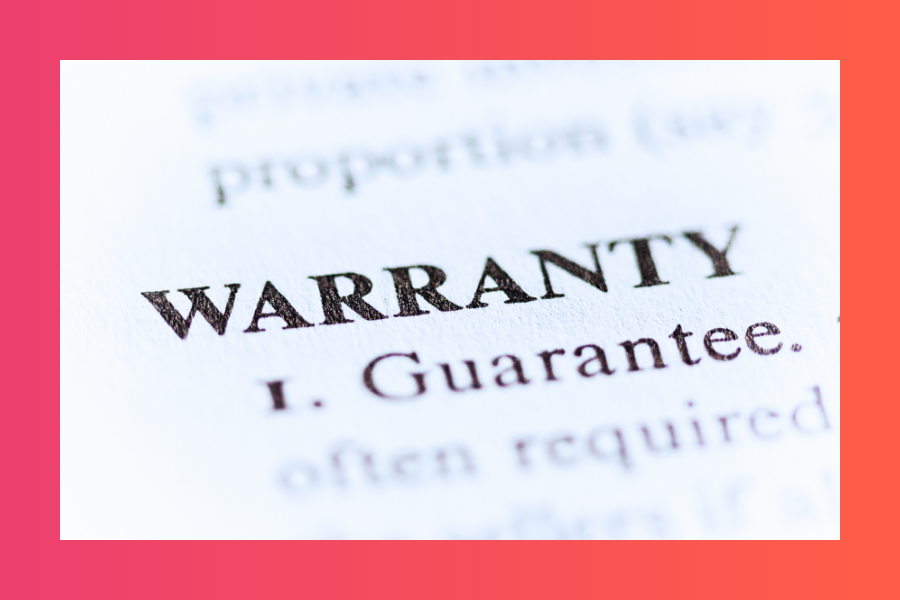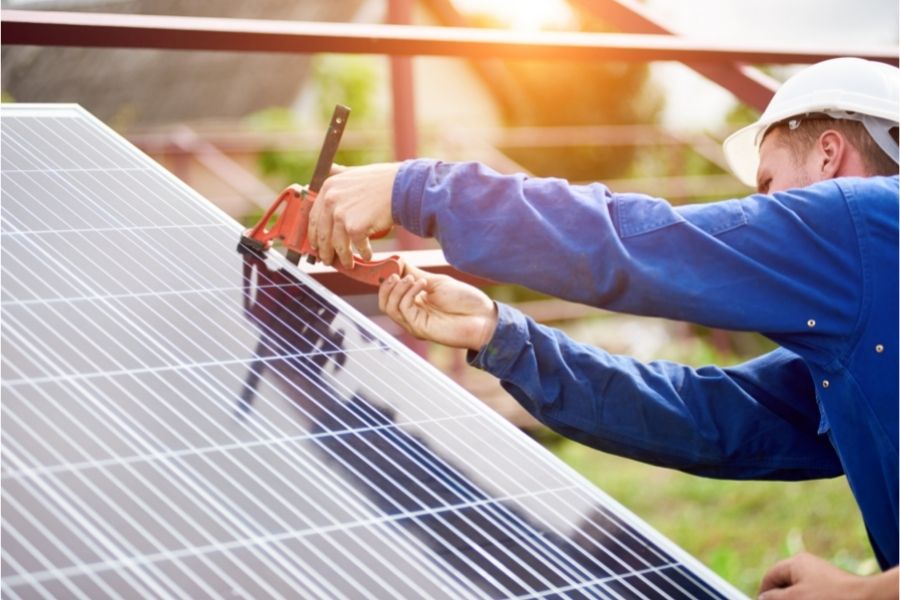A Burning Issue: Solar Fire Safety Concerns
Australia has a love affair with solar. It’s akin to Australia’s love affair with the sun generally. After all, we’re the land of sun, sea, and sand....
5 min read
![]() Solar Trust Centre Team
:
Jul 1, 2021 7:00:00 PM
Solar Trust Centre Team
:
Jul 1, 2021 7:00:00 PM
The cost-of-living savings on offer is always a big factor in Aussies purchasing a solar installation. Aussies recognise once a solar system is in place, their household can begin to drive down energy bills and even earn some income back from their system exporting energy via a feed-in-tariff (FIT). But this isn’t the only area in which the right solar system can deliver big savings in the long term – provided the correct pieces are in place at the start.
There’s a big difference between a quality solar installer and the alternative, and this applies to solar products too. For an Aussie that gets a reputable solar installer to install well-made components with a long-term warranty, they’ll be all set to reap the rewards of taking these steps for years to come. So let’s look now at how a long-term warranty on solar parts can save an Aussie household money.
For anyone yet to be familiar with the warranties process in Australia a quick overview will help. It’s necessary to keep in mind some variables can exist here. For example, if a manufacturer has an office in Australia they’re responsible for their warranties, yet if not, it’ll be the importer who is responsible for them. But the following is an overview of the regulations and common approaches to warranties across the nation.
As the ACCC details Australian Consumer Law (ACL) confirms goods sold in Australia must be of acceptable quality and fit for purpose. There can be certain exceptions to this. For instance, if someone clearly advertises and sells a used car for sale as ‘for parts only’, then it wouldn’t be reasonable for someone who has purchased it to complain the car wasn’t working properly. But there is no ‘opt-out’ clause for any business in following the ACL – it’s mandatory when operating in Australia. So unless the seller specifically makes a potential buyer aware parts are not of acceptable quality and fit for purpose, the buyer has a right to expect what they buy is.
2. Installer Warranty
This warranty is commonly offered by an installer of a solar system. Although this does not directly cover the parts and operation of the solar system, it covers the workmanship. If it emerges that a mistake has occurred or a fault has arisen as a result of the installation and/or subsequent workmanship within the warranty period, then the installer will be on the hook to remedy it. As we discuss below a manufacturer’s warranty is arguably the most important consideration when looking to save on costs over the years, but an installer’s warranty should certainly be pursued too when looking for a new solar system.
3. Manufacturer’s Warranty
This warranty is provided by a manufacturer to cover the parts (AKA panel product) and operation (AKA performance) of a solar system. A manufacturer that offers a long-term warranty sends a signal their products are made with quality parts, and they warrant their performance. Yes, a long-term warranty is by default a long time to make a promise, but given a manufacturer gets a competitive advantage over other businesses who will not warrant an extended period, it’s certainly right and fair to expect they’ll honour that promise.
So now there’s an understanding of the different types of warranties out there, what can make a long-term manufacturing one so worthwhile from a savings perspective? It comes down to the two aforementioned promises that a manufacturer offers. They give an undertaking surrounding the parts and operation of their products.
If at any time during the parts warranty its components fail due to a manufacturer’s defect, the customer will have a remedy available to them. While solar systems are unquestionably a great investment, it’s no secret the upfront cost of purchase and installation can require many Aussies households to save up for a time. A long-term warranty can help ensure a household won’t be left having to fork out another chunk of cash to get new solar products. This is unfortunately something many Aussies have had to do when they’ve purchased solar products from providers who maximise affordability at the expense of quality. Ultimately these Aussies have had to eventually pay for repair or replacement – and financially this can be a very painful lesson to learn.
It’s necessary to note the inverter is of course a part of the solar system but is usually treated differently for warranty purposes. We discuss the particulars regarding inverter warranty timelines in the conclusion below.
An inferior system might work on day 1, but over time its performance can decline. This means it won’t generate as much electricity as it once did – certainly not as much as a reputable system would – and may stop working altogether! This is really unfortunate, but in absence of a performance warranty, the solar system owner has little option but to put up with the performance decline, or opt for the previously mentioned avenues of costly repairs or replacement of the whole system. Where it concerns the operation of a system with highly respected solar products, a long-term warranty on the components will ensure the system’s operation will continue effectively during this period.
Obtaining a warranty from a reputable manufacturer also offers peace of mind as an Aussie solar owner goes about their daily life. This is because they can usually have a far greater certainty that a trusted business will still be trading in many years’ time as opposed to one that seems to offer a ‘great’ deal today – but may not even be there next year! It’s necessary to acknowledge sometimes even big businesses – for whatever reason – can close up shop. In these circumstances, there’s really no one-size-fits-all answer under Australian law regarding what happens to a warranty if a company closes.
However, even in a circumstance where a reliable business packs up shop, it’s far more likely to have a process in place that will continue to ensure all warranties are honoured for their duration even if they cease trading. This means though someone will be unable to buy new products from the business anymore, they’ll seek to ensure the business concludes operations on the right note and does the right thing for its previous customers. If utilising a questionable installer with questionable parts, the odds of them ceasing operation in time – and thus leaving customers high and dry – is far greater.
Warranties help provide some peace of mind when it comes to a solar installation. But it’s true there are additional steps that are always good form to practice where it concerns managing a solar installation from one year to the next. Ensuring a system gets regular checks and maintenance done is a great way to keep it in optimal condition from one year to the next.
Also, keeping attuned to the latest developments in the solar sector is a wise move. There are always new advances in technology, and ongoing changes on the cards surrounding the options solar owners have for export of their electricity. Such advances and changes may not have a direct impact on an existing warranty, but potential options in the future like switching suppliers for a better feed-in tariff, or even selling the system’s excess electricity via blockchain could certainly help get the very most use out of a solar system down the line.
Every solar business may differ slightly regarding the specifics of the warranties they offer.
Nonetheless, there are common industry standards among trusted solar manufacturers and installers that can serve as a good guideline.
Regarding the installation warranty, 1 to 2 years is common. Concerning parts, 5 to 10 years can be expected, and with panel operation, 25 years is the standard. Inverters are typically warranted under a different time period. While the panels are typically warranted for a much longer period, it’s common for a highly respected solar manufacturer to still warrant the inverter for at least 5 years, and many have warranties in place that cover for 10 or 15 years.
Whichever combination of these warranties an Aussie acquires with their new solar system, hiring a quality solar installer that utilises trusted components, and pursuing long-term warranties surrounding their system provide many benefits. There will be much greater peace of mind knowing the odds of something going wrong are far smaller, and in the unlikely event it does they’ve some additional protection to remedy it with their long-term warranties in place.
Browse our website for more on solar and renewable energy.

Australia has a love affair with solar. It’s akin to Australia’s love affair with the sun generally. After all, we’re the land of sun, sea, and sand....

Buying solar power products is always going to be an exciting event. This is the case whether it’s the first time, or one of many times. When all...

When it comes to $0 cost solar installations the old adage “free is expensive” can really ring true. There’s no controversy surrounding the fact that...